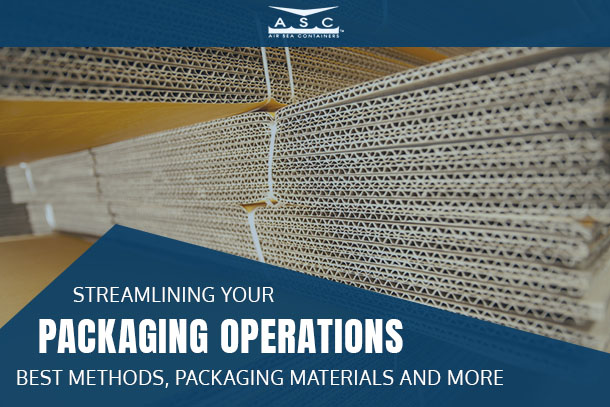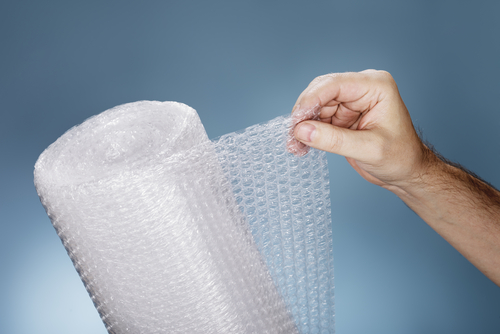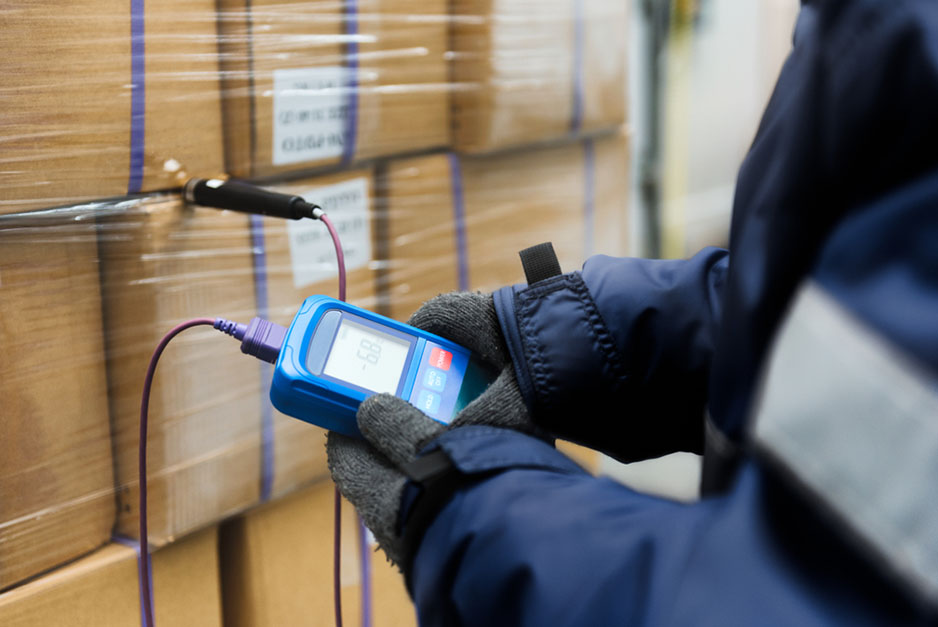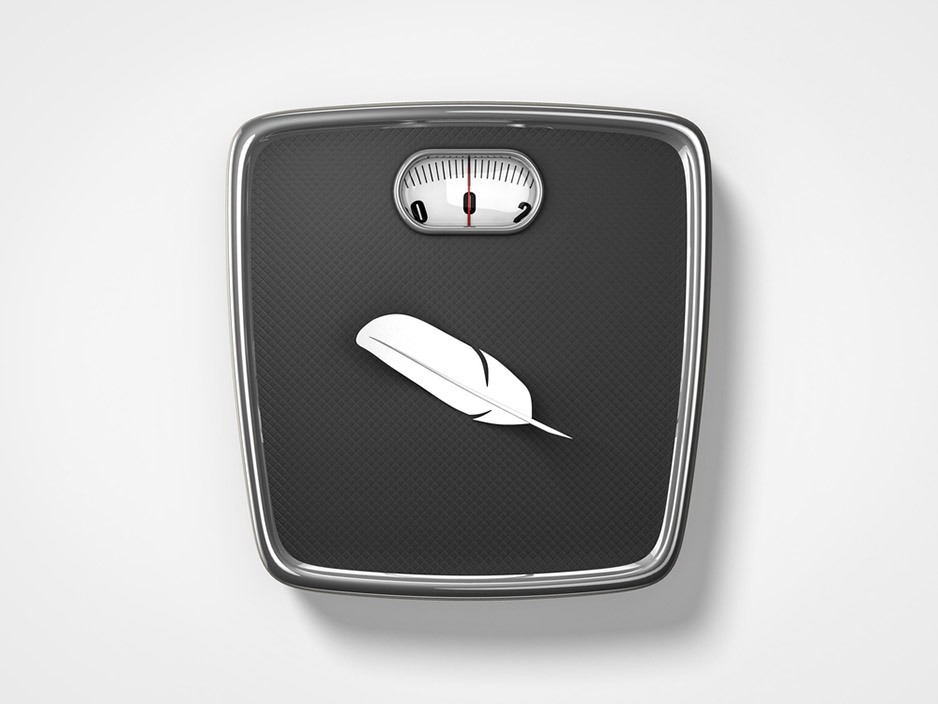To do that, you’ll need to ask some probing questions. Could you be doing more with less? Is there a way to make your packaging more functional for both customers and employees? How can your packaging make transportation more efficient? Put it all on the table, and you might be surprised at the kind of improvements you come up with.
Air Sea Containers has over 20 years of experience in creating packaging solutions in a full spectrum of industries, so we’ve had the time to look at what works, and what doesn’t—and of course, we’re also constantly watching new developments in packaging and logistics. So, we’re glad to share our knowledge with our customers and help them refine their packaging operations. In this article, we’ll give you eight key tips to keep your packaging operations tight, effective, fast and safe.
1. Consider the benefits of streamlined eco-friendly packaging.
The race is on to help the planet by creating green business practices and, increasingly, it’s clear that customers are willing to support green business by paying more for products produced and packaged using eco-friendly methods. However, it’s just as important to realize that more streamlined packaging practices can be a good business move even outside of ecological concerns.
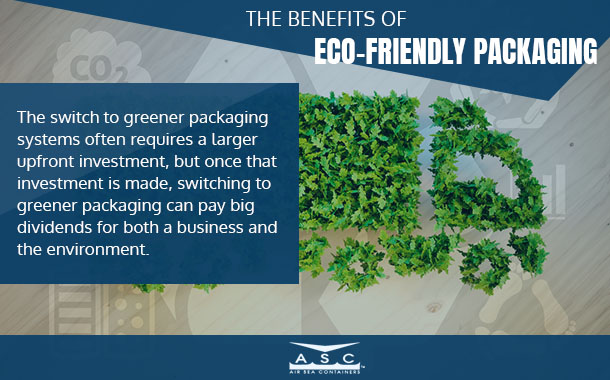
The truth is that shifting to more eco-friendly packaging solutions is all about reducing waste and reusing what you can—which are good principles for any business looking to improve efficiency. The switch to greener packaging systems often requires a larger upfront investment, but once that investment is made, switching to greener packaging can pay big dividends for both a business and the environment.
Air Sea is always on the lookout for the latest advances in eco-friendly packaging, and we now offer a full lineup of eco-friendly packaging materials. From our biodegradable Opus Air Pillow system to our recyclable Bio Bottle specimen packaging, Air Sea has the solutions for creating sustainable packaging that doesn’t compromise on quality. We’ve even created our own cleaner and greener packing peanuts, with new biodegradable sealed-air peanuts that actually offer superior performance to environmentally unfriendly Styrofoam models. It’s a perfect example of a core principle of lean packaging: doing well by doing good.
2. Using customized packaging options can help cut costs and improve packaging performance.
You’ll almost always get better results by using a tool that’s purpose-built for its use, and packaging is a great example. By using customized packaging, you can often cut the level of packaging waste to its bare minimum while still achieving the results you’re looking for. Applied at scale, that can also equal savings on fuel for logistics operations, as your vehicles will no longer be carrying the extra weight of unnecessary packaging. Moreover, packaging designed specifically to meet your product’s needs will almost always perform better.
At Air Sea Containers, we make it easy to get the customized packaging solutions that you need. One easy way to start creating your own packaging is to use Air Sea’s custom corrugated boxes! We offer total custom fabrication of corrugated shipping boxes, including printing on up to four sides of your box and a wide range of useful box designs. For our hazmat shipping customers, UN-tested and certified hazmat shipping boxes are also available.
3. Think deeply about your products, how customers use them and how packaging plays a role.
Whether you’re a B2B or B2C business, it’s always crucial to consider the needs of your customer base in all of your decisions. Your packaging might work great for your needs, but does it suit the needs of your customers? The only way to find out is by doing an analysis that puts you in the customer’s shoes.
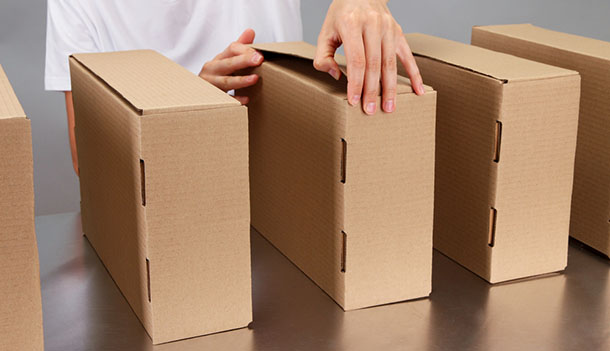
Analysis of how customers will interact with the packaging should always be built into a packaging design process. Try asking these key questions when you’re workshopping packaging designs to identify issues:
- Will the average customer find this packaging reasonably easy to open and manipulate?
- Does the packaging need extra instructions to ensure that customers use it correctly?
- Will this packaging be difficult to dispose of for the average customer?
- Does this packaging present your brand’s best face to the customer?
- Will this packaging often sit on a customer’s porch or loading dock for extended periods of time?
- If the customer has to return the product, can it be done in the same package it was shipped in? (More on this one later.)
Don’t be afraid to call in a focus group organization for big product launches or situations where you’re not sure how customers will react to certain packaging. Nailing what you need from your packaging is a big win that can be really helpful for a new product.
4. Bring your packaging process up to speed.
The process by which a product is put into its packaging can be just as important as the packaging itself in terms of efficiency. Investing in a streamlined packaging process can provide a big boost to productivity if done correctly and aligned with a business’s needs and goals:
- For businesses whose employees do packaging by hand, make sure packaging stations are set up ergonomically to reduce repetitive strain and keep them well-stocked with all materials they might require. Essential packing materials like bubble wrap, tape and air cushions should never be allowed to run out. You can also try pre-setting packaging for commonly picked orders.
- Consider your division of labor in the packaging process and experiment with improvements such as separating pickers and packers (in high-volume warehouses) or combining their duties (in lower-volume operations).
- If you’re moving a high volume of packages but haven’t implemented automation yet, it may be time to investigate your options for automating parts of the process. Automated packaging systems are often major capital investments, so it’s important to take your time in considering what you need—and remember that you don’t have to automate every process at once. Automating your labeling process, for example, is a great place to start.
- For businesses already using automated packaging systems, look into the performance data that’s available for these systems. Are there areas in which your systems are notably slow, inaccurate or prone to breakdowns? Targeting these areas of your line can yield improvements at a valuable scale.
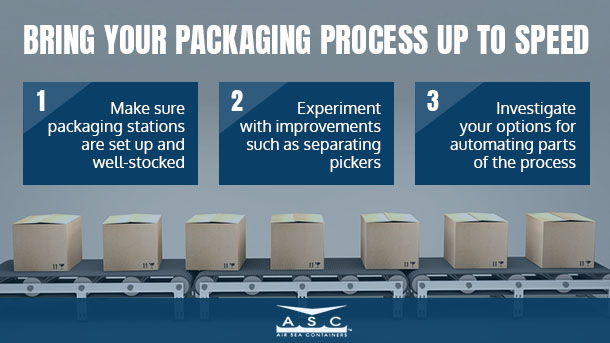
5. Gather and analyze robust data on your packaging KPIs.
The world of business is more data-driven than ever, and with the data collection tools now available to just about every business, there’s no excuse not to be monitoring KPIs in every important area. Packaging is no exception, as it can have widespread ripple effects across your business.
Selecting KPIs will always involve taking a good look at what your goals are and where your problem areas lie, so it will always be different for every business. However, there are some commonly used packaging KPIs that can serve you well:
- Number of touches the average package receives before and after the product is added.
- Item breakage rates on the shop floor, in the warehouse and in transit.
- Amount of unused space in each product’s packaging.
- Labeling errors in barcodes or product labels.
- Amount of packaging waste and how much of it is recycled.
Once you’ve established clear procedures and methods for tracking packaging KPIs, you can use them to effectively target and eliminate waste in your packaging and supply chain practices. Pay particularly close attention to KPIs as you introduce new policies and practices to observe their effects across a wide range of areas.
6. Investigate whether you can save money through reconditioned packaging materials.
Using recycled or reconditioned packaging can present great cost-cutting opportunities, particularly if you’re in an industrial or B2B sector. Items like shipping containers and shipping barrels can be reconditioned and reused as long as they go through the correct process of deep-cleaning to remove the residue of previous cargo.

Air Sea has a full range of recycled and reconditioned packaging options, including reconditioned steel or polycarbonate shipping drums. We use a long and rigorous reconditioning process to ensure that these drums are clean, free of residue and have their structural integrity intact. Air Sea can also help you to procure a reconditioned shipping container. There are hundreds of thousands around the world that are clean but unused, and we can help you find a great deal on a high-quality container.
Note that if you need FDA-approved packaging for transporting food or beverage materials, you probably can’t use reconditioned packaging. Although we use the highest standards in reconditioning our shipping materials, packaging for these applications is usually required to be new. It’s also not recommended to try to recondition barrels or containers yourself, as the processes involved usually require specialized equipment.
7. Create packaging that can be used for returns as well.
As B2C eCommerce has exploded, so have returns. Return deliveries are scheduled to cost a whopping $550 billion by 2020, and their rates are still going up. What’s more, studies show that free returns are among the top draws that will make consumers choose to shop with a retailer, and a seamless return experience is something that keeps online retail shoppers coming back.
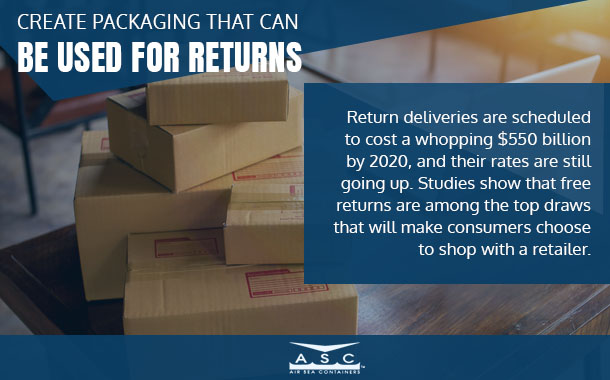
Unfortunately, returns often require considerable resource expenditures from businesses. Thus, it’s important to cut costs wherever you can while still offering a great returns service. So, one of the smartest moves an eCommerce merchant can make is to design returnable packaging and offer an easy way to print a return label through an app or website. No customer wants to have to hunt down their own box and fill out their own return label, so make these tasks as easy as possible—your customers will love you for it.
8. Find more efficient and effective methods for temperature control.
Temperature control is a critical point for millions of items that are shipped every day. The market for refrigerated logistics is estimated to be worth nearly $20 billion by 2023. For some businesses, of course, refrigerated shipping is a must, but others can save money and reduce their carbon footprints by using temperature-controlled packaging solutions.
Dry ice is a popular option for keeping goods cold, but many carriers either refuse to ship it or charge extra for it, and it requires special care and training to use safely. Instead of dry ice, consider options such as Air Sea Containers’ line of recyclable, reusable, non-toxic refrigerant gel packs. Our foam coolers also make a great complement to our gel packs by providing extra insulation for longer-lasting cooling power.
Meanwhile, some goods need to be kept warm in cold temperatures or reheated quickly. Many water-based adhesives, for example, can’t be allowed to freeze. Consider investing in the industrial warming solutions that Air Sea provides, such as warming blankets and induction warmers for shipping drums to keep your products’ temperatures regulated during winter weather.
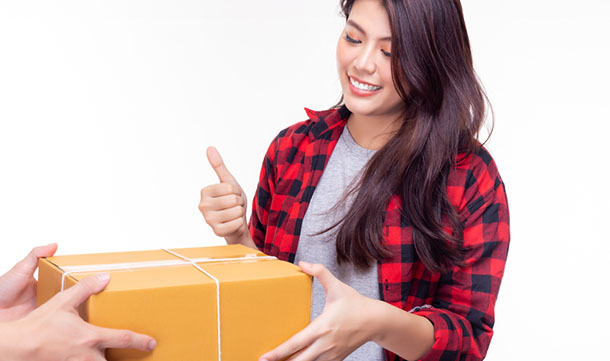
The items inside a package are obviously important—but they only make up part of the equation. The packaging itself will have more effects than most businesses can easily imagine, so when in doubt, take a step back and try to see your packaging strategies as part of a seamless interaction between business, product and customer. Once you can see the context of what your package needs to do, you can optimize it more effectively.
Naturally, when you’re ready to start that optimization, Air Sea will be there to offer guidance, expertise and a strong selection of durable packaging materials for many different applications. To learn more or get a quote on your packaging needs, call us at (866) 596-9448 or contact us online.

